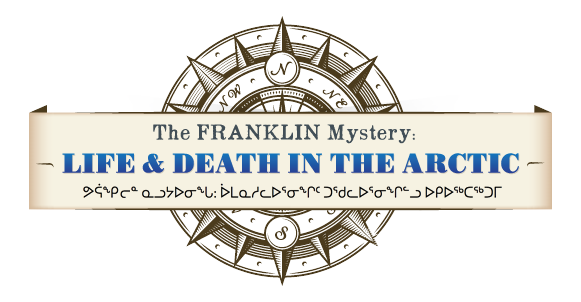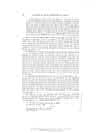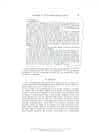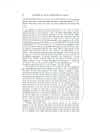The Transfer of Arctic Territories from Great Britain to Canada in 1880, and Some Related Matters, As Seen in Official Correspondence (1961 March)
The order in council was approved only three days later [July 27, 1880], indicating that it was handled without delay. Since it is unquestionably one of the key documents in the entire story of Canada’s effort to acquire title to these northern regions, it is worth reproducing in full.
"At the Court at Osborne House, Isle of Wight,
the 31st Day of July, 1880.
Present:
The Queen’s Most Excellent Majesty,
Lord President,
Lord Steward,
Lord Chamberlain.
Whereas it is expedient that all British territories and possessions in North America, and the islands adjacent to such territories and possessions which are not already included in the Dominion of Canada, should (with the exception of the Colony of Newfoundland and its dependencies) be annexed to and form part of the said Dominion.
And whereas, the Senate and Commons of Canada in Parliament assembled, have, in and by an Address, dated May 3, 1878, represented to Her Majesty ‘That it is desirable that the Parliaments of Canada, on the transfer of the before-mentioned territories being completed , should have authority to legislate for their future welfare and good government, and the power to make all needful rules and regulations respecting them, the same as in the case of the other territories (of the Dominion); and that the Parliament of Canada expressed its willingness to assume the duties and obligations consequent thereon;’
And whereas, Her Majesty is graciously pleased to accede to the desire expressed in and by the said Address:
Now, therefore, it is hereby ordered and declared by Her Majesty, by and with the advice of Her Most Honourable Privy Council, as follows:-
From and after September 1, 1880, all British territories and possessions in North America, not already included in the Dominion of Canada, and all islands adjacent to any of such territories or possessions, shall (with the exception of the Colony of Newfoundland and its dependencies) become and be annexed to and form part of the said Dominion of Canada; and become and be subject to the laws for the time being in force in the said Dominion, in so far as such laws may be applicable thereto.
(sgd) C.L. Peel."
[Comments]
The absence of precise territorial delimitation, in the order as finally constructed has aroused comment, and is certainly inconsistent with the earlier attempts to avoid leaving anything in doubt. The Colonial Office enlisted the help of the Hudson’s Bay Company, the Admiralty, and the Canadian Government, as well as its own personnel, in order to determine what arctic territories were British property; and throughout most of the correspondence the quest continues for an exact definition of the territories being transferred. It is also evident in the Canadian joint address of May 3, 1878; and the remarks of members who spoke during the debate when the address was accepted indicate their belief that a major benefit of the transfer from Canada’s point of view would be the clarification of her northern boundaries. Nevertheless, all such attempts were abandoned at the end, and in the final order the British authorities resorted to the almost meaningless expression “all British territories and possessions in North America, not already included within the Dominion of Canada, and all islands adjacent to any of such territories or possessions… (with the exception of the Colony of Newfoundland and its dependencies)…” in naming the territories subject to the transfer. Why the change?
Here again the answer or much of it seems obvious. Dr. King suggests that Great Britain doubted the validity of her title to all the lands within the limits that had been proposed, and hence declined to make a precise delimitation, although she did want to transfer to Canada whatever possessions she had in this quarter. Holmden, who in general agrees with King, observes that the British did not know which of their arctic territories had not already been annexed to Canada, and that in any case an exact definition could not be given of territories that were then still largely unknown. For these reasons, he is sure, the order in council was intentionally phrased in imprecise terms. All these points are borne out by the correspondence, which indicates that at the start the authorities wanted a precisely worded document, and gave up only when it became obvious that this would be impossible to achieve in satisfactory fashion. It is also clear that the Admiralty hydrographer’s report of January 23, 1879, with its suggestion that the British claim stop at 78˚30’N. in deference to American explorations farther north, caused second thoughts about the wisdom of an exact claim. At any rate this marks the approximate point where attempts at precise delimitation were abandoned.
[…]
A subsequent development of interest here was the enactment of the Colonial Boundaries Act in 1895. A copy of this act was sent to Canada, accompanied by a copy of a circular from Colonial Minister Joseph Chamberlain that read as follows:
"The Law Officers of the Crown having recently reported that where an Imperial Act has expressly defined the boundaries of a Colony, or has bestowed a Constitution on a Colony within certain boundaries, territory cannot be annexed to that Colony so as to be completely fused with it, as, e.g., by being included in a province or electoral division of it without statutory authority, it followed that certain annexations of territory to Colonies falling within the above category which had been effected by Order in Council and Letters Patent, accompanied by Acts of the Colonial Legislatures, were of doubtful validity, and this Act has been passed to validate these annexations, and to remove all doubts as to Her Majesty’s powers in future cases."
The act itself is very short. The main clause is given below.
"Where the boundaries of a colony have, either before or after the passing of this Act, been altered by Her Majesty the Queen by Order in Council or letters patent, the boundaries as so altered shall be, and be deemed to have been from the date of the alteration, the boundaries of the colony."
[…]
Canada’s various attempts to organize and delimit the new territories began in 1895, when a Dominion order in council was passed creating the four provisional districts of Ungava, Yukon, Mackenzie, and Franklin, the last-named including the archipelago. Her long effort to bring them under effective administration and control began about the same time or shortly afterwards, with the Wakeham, Low, and Bernier voyages to the Arctic, and the establishment of mounted police posts at various places on the mainland and later in the islands. However, all this is outside the scope of the present article.






